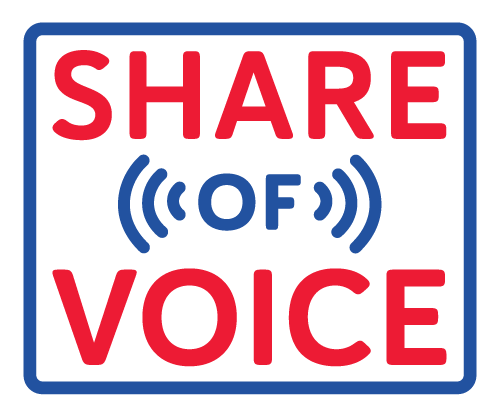FAQs
what is “social listening”?
Social listening makes sense of the “fog” of social media by applying powerful artificial and human intelligence to discover meaningful trends among millions of online conversations - for example, the A.I. detects patterns such as the most common words and phrases used about a certain topic or person, the growth or decline of a conversation topic, the demographics of people who discuss a particular topic (age, gender, partisan affiliation, etc.), and then a human analyst interprets the data in a way that helps achieve a real-world goal - turning intelligence into action.
HOW CAN SOCIAL LISTENING HELP ME?
Social listening can help your organization with:
issue focus - finding the issues that matter most to your target audience
message development - learning how real people talk about particular issues so that your voice sounds like theirs, and comparing different online narratives about a particular topic to see which narrative is resonating most
demographic research - in-depth analysis of the conversations, concerns, and interests of key constituencies
tracking harmful narratives - understanding the size, scale, and origin of negative narratives online to determine whether a response is needed, and if so, which counter-narratives might be most resonant
informing targeted ad spending - getting maximum value from your advertising dollars by learning precisely who should be targeted, and with what message and rhetoric
Social listening is especially important for any organization engaged in online organizing, advocacy, and fundraising - if you are speaking online, make sure you are listening first.
WHERE ARE THESE “CONVERSATIONS” HAPPENING AND HOW CAN YOU SEE THEM?
All major public social media is visible to the analysis tools - including Twitter, public Instagram and Facebook, TikTok, Youtube comments, Reddit, Pinterest, Tumblr, blogs and other online forums. Our analysts build queries using boolean operators to zero in on every post about a particular topic - and we can narrow the search by US city, US state, age group, gender, and any demographic subgroup that people self-identify as online (moms, dads, veterans, teachers, retired people, gamers, political partisans/activists, etc.) - and any combination of the above (say, female veterans in Florida).
HOW DOES THE REPORTING WORK?
Social listening works best when it is done on a regular basis, so that you can track a conversation as it evolves rather than just getting a one-time snapshot. Most organizations find a monthly or biweekly reporting tempo to be optimal, though more frequent reporting is often needed in the weeks and days leading up to an election. Our team will set up an initial kickoff call with your organization to talk through your goals and challenges, and develop a reporting strategy catered to your needs. Each report is delivered both electronically and via an online presentation call, where the analyst personally responsible for the reporting can talk through each finding in detail.
ISN’T SOCIAL MEDIA JUST DOMINATED BY THE MOST EXTREME VOICES?
There are certainly some loud talkers online that like to make noise, but our tools are capable of minimizing and even eliminating the voices on those extremes. The truth is, the vast majority of social conversation is focused on non-political concerns - sports, music, lifestyle, and parenting are always a significant presence - and it is actually within those conversations that many meaningful insights can be found. That being said, most social media users do follow some sort of political or news-related accounts, and 71% of Americans get at least some of their news from social media. Understanding which narratives are emerging online about current events is crucial to understanding how Americans might feel about a particular issue or candidate.
I ALREADY HAVE POLLING AND FOCUS GROUP DATA - WHAT MAKES THIS DIFFERENT?
Social listening is not intended to replace polls or focus groups, but rather to fill in the gaps where those voter research methods fall short. Polling is most useful for learning about what voters might choose when presented with a limited number of options, like voting preference, but social listening excels at measuring passion and enthusiasm - posting online about a topic is an active choice, and automatically indicates an elevated level of concern, and usually a desire to persuade others. Polling might tell you that affordable childcare is popular when presented as an option, but it wouldn’t tell you that the number of people organically mentioning the cost of childcare online is a small fraction of those mentioning escalating rent prices - a finding that would lead to a recommendation from our team to focus more on the cost-of-living issue that the most people are saying they’re impacted by.
Focus groups are a little more analogous to social listening, with a crucial difference: rather than trying to elicit natural reactions in a formal focus group setting, social listening makes it possible to analyze thousands and even millions of organic conversations that people who fit your targeted constituency are having with friends and family, and track those conversations as they evolve, rather than getting a one-time snapshot. Segmenting is one of our specialties - we can segment by age, gender, race, ethnicity, marital status, parental status, partisan affiliation (including independents/moderates), affinities (say, dads who go fishing), and much more.
HOW MUCH DOES IT COST?
Compared to other voter research tools like polls or focus groups, social listening is much more budget-friendly — the cost of an entire year’s worth of monthly social listening reports is comparable to the cost of a single poll from a quality polling organization.
